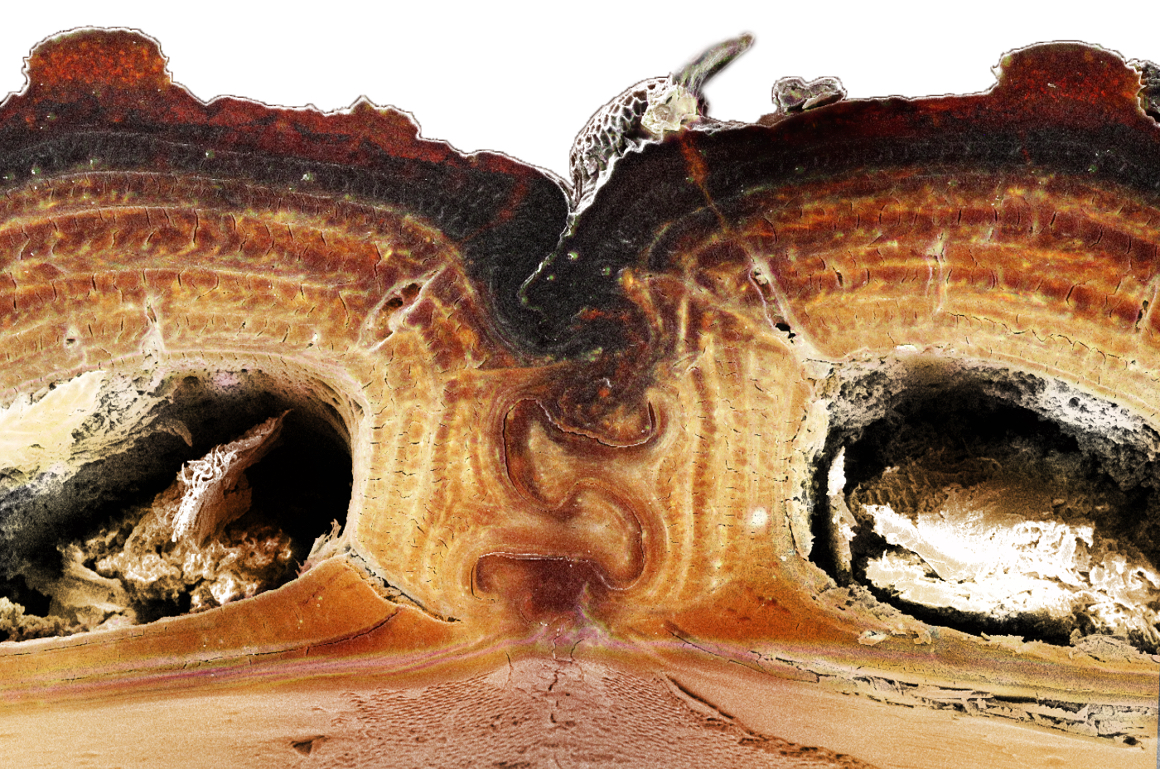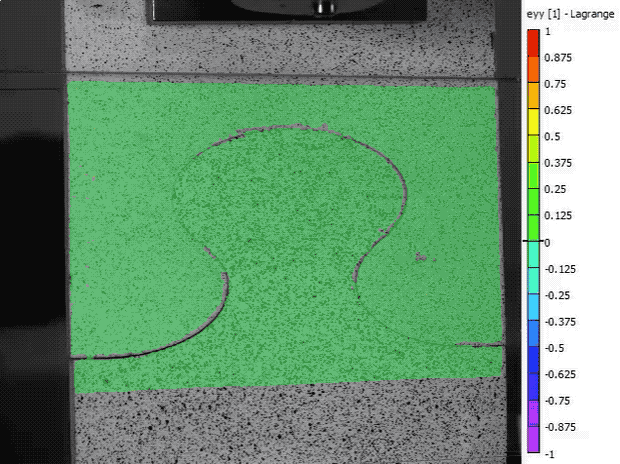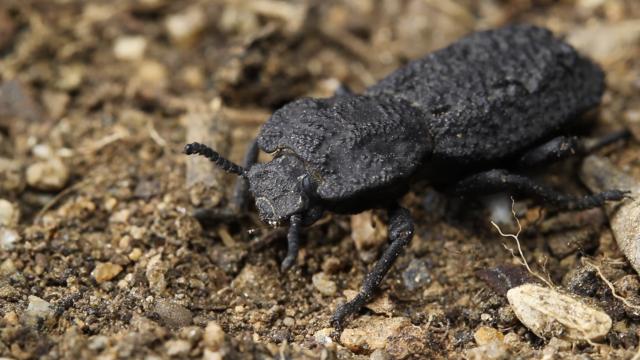The diabolical ironclad beetle, in addition to having one of the coolest names in the animal kingdom, boasts one of the toughest natural exoskeletons. A team of scientists has finally figured out the secret behind this extra durable armour and how these insects can survive getting run over by a car.
As wise people often say, a reed that bends in the wind is stronger than a mighty tree that breaks during a storm. New research published today in Nature suggests the diabolical ironclad beetle (Phloeodes diabolicus) is an adherent of these sage words. Their exoskeletons are extra tough, but when the pressure literally gets to be too much, their protective shells take on an elastic quality that results in a kind of stretching rather than breaking.
The scientists who made this discovery — a team from Purdue University and the University of California-Irvine — say the unique strategy employed by the diabolical ironclad beetle could inspire the creation of innovative materials, namely components capable of dissipating energy to prevent catastrophic breakage. David Kisailus, a professor of materials science and engineering at Purdue, led the new research.
Found in the U.S. southwest, the diabolical ironclad beetle likes to hide under rocks and squeeze behind tree bark. These beetles cannot fly, so they’ve developed a pair of interesting defensive strategies to protect themselves against predators such as birds, rodents, and lizards. In addition to playing dead (a classic and effective strategy in its own right), these tank-like bugs are equipped with one of the toughest shells known to science. So strong is this exoskeleton that these beetles can survive getting run over by a car. More practically, this shell protects their internal organs when, say, they’re getting pecked at by birds.
To better understand these beetles and their durable exoskeletons, the researchers prodded the limits of this armour, studied it with microscopes and CT scanners, and even 3D-printed their own versions to test their theories.
Experiments showed that diabolical ironclad beetles can withstand an applied force of 150 newtons, which is 39,000 times its body weight. If we were to compare this to humans (not a great example, given the vastly different scales involved, but fun nonetheless), that would require a 91 kg person to endure the crush of 7.8 million pounds, according to a Purdue press release. A tire passing overhead would inflict 100 newtons of force, which explains how these beetles can survive run-ins with cars. The researchers say other beetle species can’t handle even half of this load.

Physical analysis of the exoskeleton with microscopes and CT scanners showed that the key to this durability lies in this creature’s elytra. In flying beetles, elytra serve as the protective wing-cases for their hindwings (in ladybugs, elytra are the red and black polka-dotted shells that open up when it’s time for them to fly). For the terrestrial diabolical ironclad beetle, however, its two elytra evolved a different purpose, protecting its internal organs instead of its wings. And in so doing, it has become considerably tougher than the elytra found in other beetles.
This shell confers two levels of protection, as the new research points out.
The outer layer prevents excessive motion, keeping the structure of the exoskeleton intact. This outer layer features more protein than usual — about 10% more by weight than other parts of the beetle’s body — which adds extra strength.

At the same time, the medial suture — the line that divides the two elytra along the length of the beetle’s abdomen — features connective blades that are best described as the pieces of an interlocking jigsaw puzzle. These blades, or sutures, interlock tightly, preventing any internal motion and keeping the structure of the overarching exoskeleton intact.
But remember our reed-in-the-wind analogy? Should things start to get too intense, and the stresses too powerful, there has to be some give, lest the beetle ends up broken like the stubborn tree. In this case, the interlocking sutures go through a process called delamination, or layered fracturing, in which the connecting structures slowly pull away from each other, allowing for the dissipation of energy and elastic deformation. This interlocked configuration will collapse completely if the forces are too extreme, but the breakage process happens more slowly and more gently than a plain old snap. In a real-world scenario, this means an extended time until complete failure, which, for the beetle, could be a matter of life and death.
“When you break a puzzle piece, you expect it to separate at the neck, the thinnest part,” explained Kisailus in a UC-Irvine statement. “But we don’t see that sort of catastrophic split with this species of beetle. Instead, it delaminates, providing for a more graceful failure of the structure.”
To buy the beetle even more time, the blades feature a prickly coating that acts like sandpaper, providing some but not too much resistance during slippage.
By running computer simulations and printing 3D models of these structures, the researchers were able to replicate these protective effects, further strengthening their assumptions. They also built a fastener based on the same strategy, and it proved to be just as good as conventional engineering fasteners, if not better.
“This work shows that we may be able to shift from using strong, brittle materials to ones that can be both strong and tough by dissipating energy as they break,” said Pablo Zavattieri, professor of civil engineering at Purdue, in a university statement. “That’s what nature has enabled the diabolical ironclad beetle to do.”
With this knowledge, engineers might be able to build extra-tough materials, such as improved aircraft gas turbines, which involve metals and composite materials that need to be held together with mechanical fasteners. Indeed, we don’t always need to reinvent the wheel — often, nature has already solved a problem quite elegantly.
